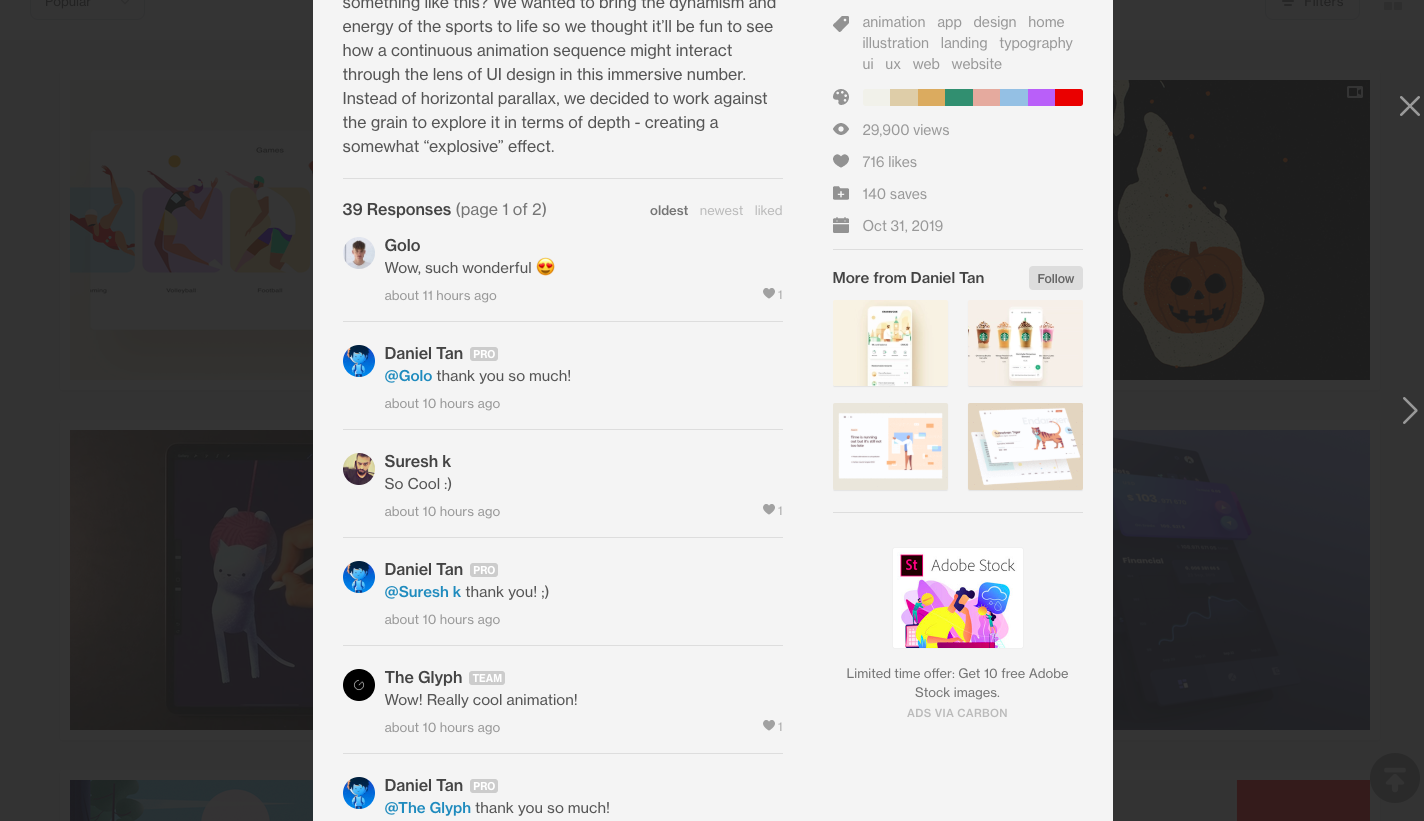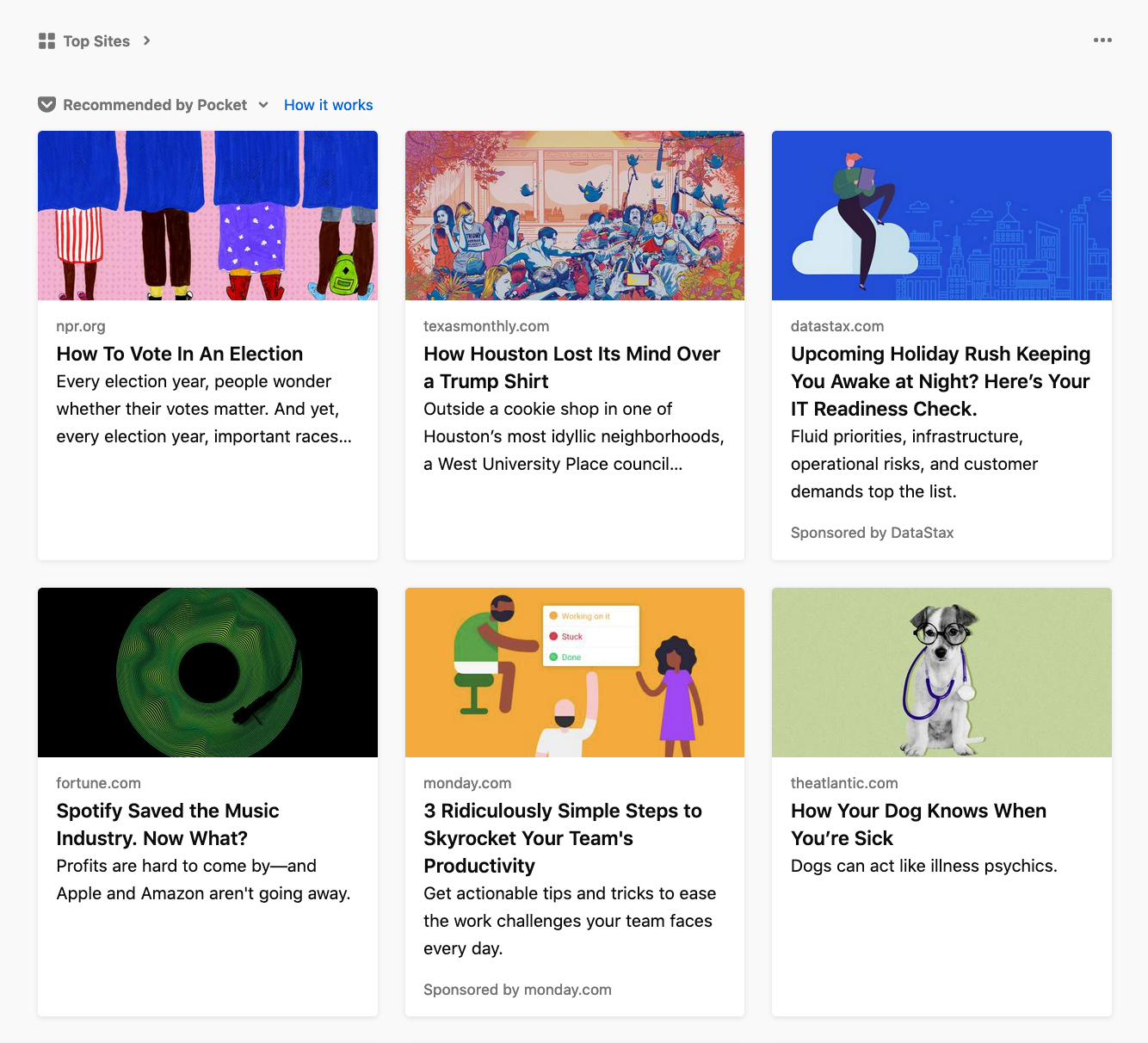Advertisers will spend almost $44 billion on native ads this year (2019). That's an increase of $9 billion from last year.
Not only is native advertising growing rapidly, but it's changing how we perceive content online. As audiences become increasingly suspicious of digital advertising efforts, native ads have come to represent a more effective approach to targeting hard-to-reach audiences.
This rings especially true for the elusive cryptocurrency community.
These tech-savvy early adopters are already sensitive to the intrusive advertising tactics of the past. They know a scam when they see one and have a lot of experience dodging illegitimate market players. In short, they’re a little jaded.
However, Cryptocurrency audiences are extremely valuable. They're a passionate group, and having them on your side can bring extensive online word-of-mouth to your product (and with that, explosive growth). The segment is growing quickly, along with the adoption of cryptocurrencies in everyday life, and because it's early days, we're still seeing loyalty swing between different tokens and companies.
If you have the right product, this is the time for you to win them over.
But what exactly is native advertising, and how does it apply to cryptocurrency audiences? In this article, we’ll explore native ad functionality, applications, and the unique strategies that acquisition and demand gen marketers can employ to capture the attention of cryptocurrency audiences (at multiple stages of the funnel) and effectively convert them into loyalists and promoters.
Native advertising as a contextual targeting tool
Native advertising aims to match the form and function of the platform on which it appears. These ads appear beside relevant, high-quality content that targets a select demographic. For example, an ad might take the form of an article written by an advertiser while emulating the structure of regular editorial content.
-21.png)
Source: Cryptoslate Homepage Native Ads
Native ads might also take the form of curated suggestions rather than irrelevant banner ads, like in the case of Adobe Stock on Carbon below.

Source: Carbon - Adobe Stock Native Ad
In another example, you can see Datastax appealing to tech/developer/crypto audiences via Pocket:

By matching the aesthetics of their publisher, these advertisements are especially appealing to audiences more sensitive to disruptive user experiences. As such, they continue to function as a highly effective contextual targeting tool across diverse market segments.
Is display advertising also native advertising?
Now that we know what native ads are, let's discuss what they're not. Generally speaking, while native ads are meant to blend in, display ads are intended to stand out - at least subconsciously. At BuySellAds, some of our native advertising has similarities with display, and what is technically native advertising can also be classified in a similar way, but the two in fact are different.
But what exactly is display advertising?
-15.png)
Source: Marwick Marketing
Display ads or banner ads are meant to be a visual trigger and may appear out of context next to the other page elements. However, they can still be an effective way to create visibility for your brand, depending on your target audience. If used appropriately, display ad placements can impact a potential customer's journey across multiple touchpoints, while not being overly intrusive or annoying.
Also, display ads can help build awareness and brand recognition, generating conversions through consistent messaging. However, as mentioned, this form of advertising is not as appropriate for appealing to cryptocurrency audiences, who are generally very ad averse.
High-quality, appropriately placed native advertising (among other things) remains the more effective tool for reaching this group, but you may not want to ditch display advertising altogether, as it remains an effective part of a cohesive demand generation strategy.
Why is native advertising so effective?
It's no secret that native advertising is incredibly useful. People view native ads 53% more frequently than traditional ads. According to eMarketer, US advertisers will increase their native ad spending by 24.6% this year alone, reaching almost $44 billion. By next year, nearly two-thirds of display spending will go toward native ads.
-19.png)
Source: US Native Advertising 2019
The primary driver of this ongoing success is much-improved user engagement. Unlike pop-ups or banner ads, native ads allow audiences to engage with advertisements on their terms. For those growing up amidst an onslaught of online ads, the shift to contextual advertising is a welcome, more engaging change.
In an industry where banner ads drive skepticism, native ads can empower cryptocurrency audiences. As a group that prizes autonomy, privacy and decentralization, native advertising represents a non-intrusive way for brands to reach out.
With many in the crypto ecosystem coming from scientific backgrounds, an inherent focus on legitimacy, technical accuracy, and data use considerations has come to define the community. As such, marketers must design and implement campaigns that account for these unique perspectives.
Cryptocurrency audiences have overlap with some of our other tech-focused verticals, like designers for example, but because crypto users are also such strong supporters of transparency, marketers must ensure that the source of their content is clear, as well as their intentions with any given to campaign, to avoid deceiving audiences. If millennial audiences are somewhat pessimistic about advertising, cryptocurrency audiences take this to another level.
According to Reuters, almost half of all consumers report feeling disappointed or fooled by sponsored ads. Based on prevailing community traits, it's safe to surmise that this figure is far higher amongst crypto users.
-17.png)
Source: Reuters Institute Digital News Report 2019
To summarize, If native ads are relevant and appropriately placed, audiences will notice them organically. However, people are also less likely to engage with or show interest in advertisements that are irrelevant or poorly placed.
For marketers, this dynamic presents a valuable opportunity to understand the actual effectiveness of advertising efforts. Because people are intentionally engaging with an ad, audiences are automatically qualified in the absence of flashy click-bait.
By leveraging the power of non-intrusive ads, marketers allow ad-averse cryptocurrency audiences to focus on valuable content without sacrificing the user experience.
Native advertising for cryptocurrency audiences
Although we’ve briefly touched on several crypto user traits, there’s more to uncover. By exploring these prominent attributes in detail, marketers can build a foundation of community understanding that will help formulate effective campaigns.
Crypto audiences are ad-averse
Cryptocurrency audiences are particularly suspicious of digital advertising. This aversion behaviour is a reflection of their experiences in an emerging market characterized by lax regulation, rampant scams and sophisticated, rapidly evolving technology.
According to a recent report from CipherTrace, hackers have already stolen over $4 billion in crypto crimes this year. This figure is up from the $1.7 billion lost in all of 2018.
However, scams aren’t the only factor influencing crypto audience ad-aversion. These consumers are also critical of over-blown narratives and empty promises. As mentioned, many come from scientific disciplines; this audience trusts hard facts and proven results, not flashy ads with little substance.
Optimizing your advertising campaign with this inherent skepticism in mind is essential for your ads to be effective. Honesty and transparency are important for your marketing campaigns to work. This should go without saying.
-20.png)
Source: Bitcoin.com - Prominent 2018 Scams
Crypto audiences are tech-savvy
Cryptocurrency audiences are a naturally tech-savvy group. As such, they are likely to be more sensitive to intrusive ads that take away from the user experience (UX). This demographic understands the value of a clean user interface (UI) as a result of their technical profession and extensive experience navigating the web.
As a less intrusive, contextual option to traditional banner ads, native ads can reach crypto audiences more effectively by preserving the UX while blending into the UI.
-18.png)
Source: Cointelegraph Home Page Native Ad
Crypto audiences favour decentralization
Those participating in the crypto ecosystem are inherent supporters of the decentralized movement. As such, these individuals prize open-source initiatives, question intermediary involvement and see cryptocurrency as a path towards new world order.
Because the existing advertising market remains largely centralized (and some would say monopolized), many in the crypto community remain resistant to any form of advertising. With this in mind, marketers need to adjust their strategies accordingly and deploy campaigns in line with community values.
This process usually begins with choosing a publisher network that operates within the value-set of cryptocurrency audiences. Your audience should be top of mind as you design your campaign, choose an ad network, and create your messaging.
The native advertising marketing funnel
Although many marketers are well acquainted with the funnel, some may not understand where native advertising fits into the bigger picture, especially when it comes to crypto audiences. Typically, native advertising focuses on the top-of-the-funnel (ToFu) marketing channels that are meant to drive awareness during product discovery.
-27.png)
Source: Freshsales
Marketers must prepare native ads with the understanding that they will likely drive initial customer interactions. If used appropriately, these ads are an excellent way to generate product demand, target new customers, build brand awareness, and drive lead generation outcomes such as sign-ups. Also, if run on a network, native ad campaigns can be scaled appropriately and are quick to launch in comparison to other placement types.
Although these are typical Top-of-Funnel (ToFu) goals, native ads can also help marketers reach people at the research or Middle-of-Funnel (MoFu) stage. Because of their contextualized nature, these ads are effective at reaching audiences already looking to purchase a similar product or service.
-26.png)
Source: Freshsales
For example, CircleCI was able to reach enterprise-level software teams using targeted, non-intrusive native ads across hundreds of developer-focused websites. Because developers already frequent these publishing platforms, CircleCI's ads drove conversions down the funnel, lowering the cost per lead by 65%.
Optimizing the conversion path for native advertising
Now that we've seen how native ads can appeal to crypto audiences throughout the funnel, understanding how to optimize conversions, wherever they occur, is an essential next step. In doing so, marketers can ensure they are generating the highest possible return on their ad campaign.
However, optimizing a campaign to generate conversions requires the use of appropriate performance metrics. In this pursuit, attribution models are a valuable tool, dictating the assignment of conversion credit so that ROI is easier to determine.
Attribution Models
If companies are running multiple campaigns, it can be challenging to measure the ROI for each; that’s where attribution models come in. Because native ads align with any of the prominent attribution models, we’ll briefly touch on each:
- First Touch: The first thing that the lead interacted with, or action they took before converting, gets the conversion credit.
- Last Touch: The last action, campaign, or piece of content that the lead interacted with before converting, gets the conversion credit.
- Multi-Touch: The act of determining the value of each customer touchpoint leading to a conversion. Although harder to implement, the Multi-Touch model highlights the benefits of native advertising best. Because audiences usually interact with native ads multiple times before purchasing, this model would account for and value each impression independently.
-29.png)
Source: Segment
Measuring the performance of native advertising
In addition to attribution models, there are several performance metrics that marketers can use to objectively and consistently assess the performance of their ad campaigns.
As mentioned, marketers must use performance metrics to accurately calculate the return on investment (ROI) generated by native ad campaigns. In doing so, there are opportunities to optimize campaigns in response to how users are interacting with active advertisements.
Traffic driven metrics
Conventional traffic driven metrics include impressions, clicks, and click-through rates (CTR). Although this is where measurements should start, marketers should also dig deeper to get the bigger picture.
Conversion driven metrics
When potential customers visit a company's website after engaging with an ad campaign, they have merely become aware of what’s being offered - this doesn’t necessarily translate to a sale right away. As such, companies must determine where conversions take place and how they can be objectively measured.
Traditional conversion metrics include user actions like new leads or sign-ups. However, tracking performance metrics, such as view-through conversions, can provide marketing teams with more in-depth insights. View-through conversions are a concept that applies broadly to customer acquisition, often providing a larger birds-eye view of how different campaigns (including native advertising, display advertising, and other forms) affect the customer journey before a purchase. Many are surprised to see the influence that touchpoints like display advertising have on the customer journey.
Revenue-driven metrics
By tracking the journey from top to bottom of the paid marketing funnel, marketers can accurately determine the impact of an ad campaign. Taking into account revenue-driven metrics is important when assessing the value of your paid advertising, content marketing efforts, and other forms of marketing.
Creating effective native advertising for cryptocurrency audiences
There’s no doubt that crypto audience attributes should influence the trajectory of native ad campaigns. However, there's more to understanding how these ads can be made most effective for cryptocurrency communities.
Publisher networks
For those operating in the cryptocurrency industry, choosing the appropriate publisher network is crucial to locating the right audience. Marketers should choose an advertising network that curates high-quality publishers that provide access to the crypto vertical at scale.
Marketing professionals must choose a publisher that is both relevant and reputable in the crypto community.
This process is particularly important in the crypto industry, given the high concentration of malicious market players and systemic resistance to advertising. For example, websites such as CoinMarketCap and Bitcointalk are highly respected in the crypto community and reach millions of users.
-24.png)
Source: CoinMarketCap
Understand your marketing funnel and key performance indicators (KPIs)
As mentioned, the marketing funnel for native crypto ads remains focused on top-of-funnel (ToFu) initiatives that drive brand awareness. Therefore, advertisements should reflect the understanding that native ads may be the primary driver of lead generation.
With this in mind, companies must provide a strong landing page that converts while also offering a product that provides perceived value in the cryptocurrency ecosystem. Remember, crypto audiences don't respond to marketing jargon or empty rhetoric.
To determine the effectiveness of these efforts, marketers must exercise consistency when selecting key performance indicators (KPIs), whatever they may be. Although measuring contextual marketing efforts is challenging, brand-building campaigns do trigger some measurable behaviours such as those we've already touched on above.
As one example, crypto exchange Bitpanda saw measurable success following its native advertising efforts. By using display and native campaigns, the company was able to reach relevant communities, resulting in millions of impressions and thousands of clicks. As a result, Bitpanda placements have seen a click-through rate (CTR) nearly three times higher than the industry standard.
-25.png)
Source: BuySellAds
To measure the success of campaigns like Bitpanda, marketers should assess metrics from each component of the marketing funnel, as described above. In doing so, a broad perspective will enable continuous ad optimization to find out what works best.
Ineffective native advertising for cryptocurrency audiences
We know that native advertising is meant to blend seamlessly with the platform on which it appears. In staying true to this principle, ads should be placed on appropriate publisher platforms. If marketers fail to assess the context of their chosen publishers accurately, native ads may appear user data-driven. For cryptocurrency audiences, this is highly problematic as it suggests a lack of privacy and centralized data collection.
These overly-personalized ads are precisely the type that cryptocurrency audiences have come to ignore. Also, this group is more likely than others to use ad-blockers, which makes an ill-suited native ad even less likely to be seen. In the face of this growing trend and emerging regulations, marketers must ensure native ad campaigns remain contextual.
-28.png)
The future of native crypto advertising
Native advertising is one of the most effective ways to reach the elusive cryptocurrency community. These tech-savvy consumers have seen far too many inflated claims and failed projects to take conventional marketing strategies seriously. As such, native ads provide an opportunity to engage a demographic that has long criticized the implications of advertising driven by user data.
Companies looking to launch native crypto ad campaigns should first build a solid understanding of industry events, both past and present. Although the cryptocurrency community is relatively small, it changes quickly. As such, marketers must stay on top of industry trends to optimize the performance and placement of advertisements.
By embracing key crypto community attributes such as privacy, transparency, and decentralization, marketers can effectively refine messaging and drive more conversions to their products and services.


